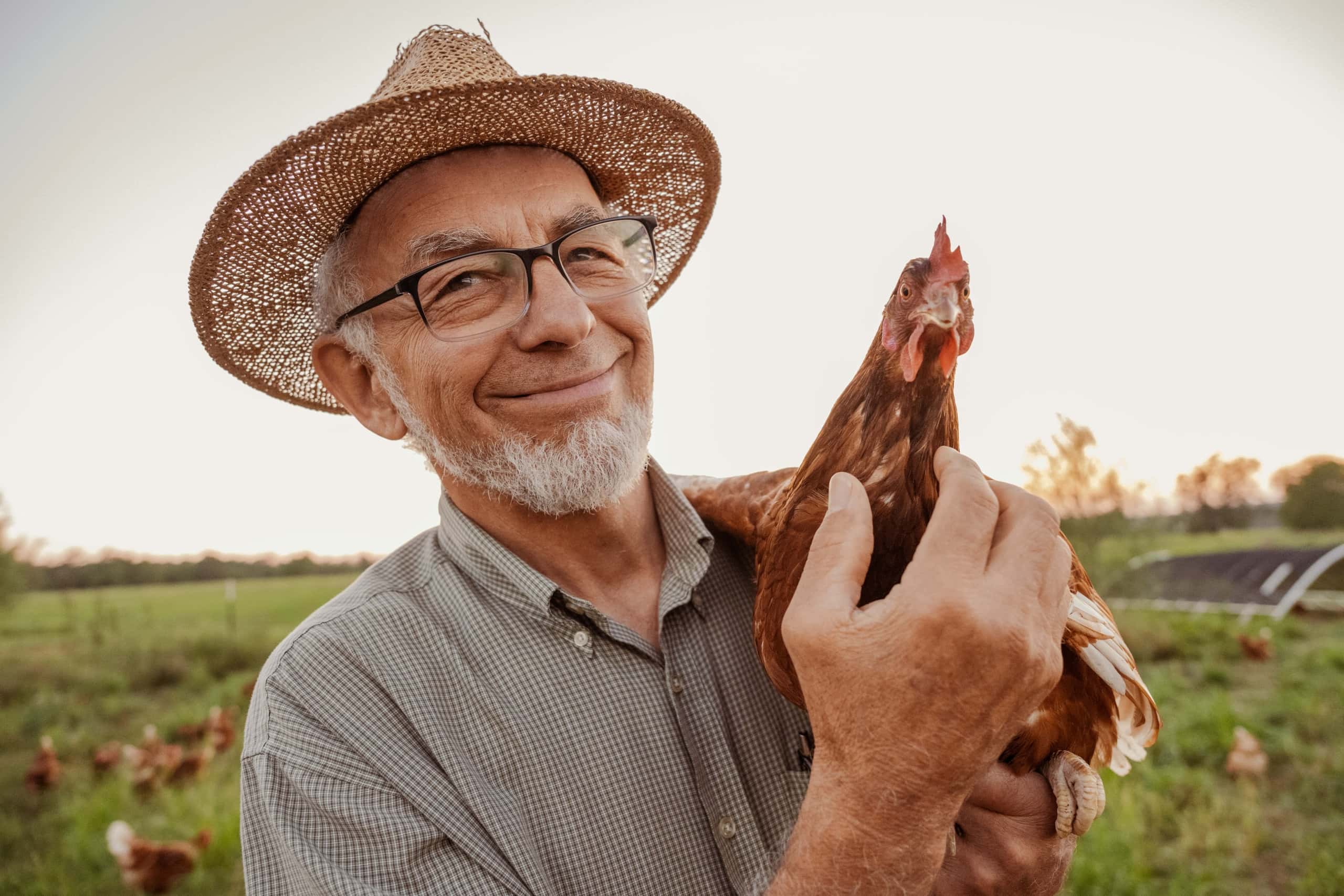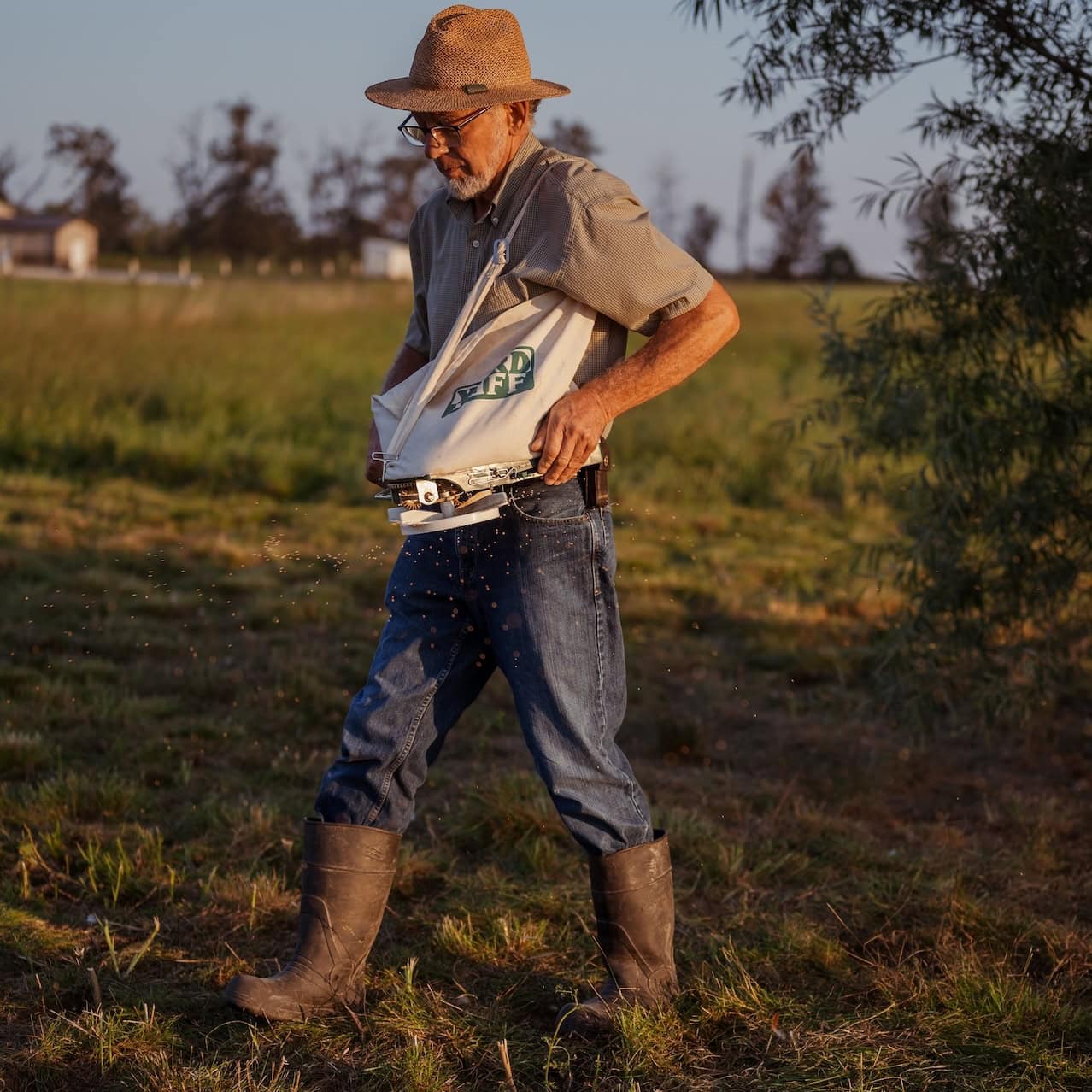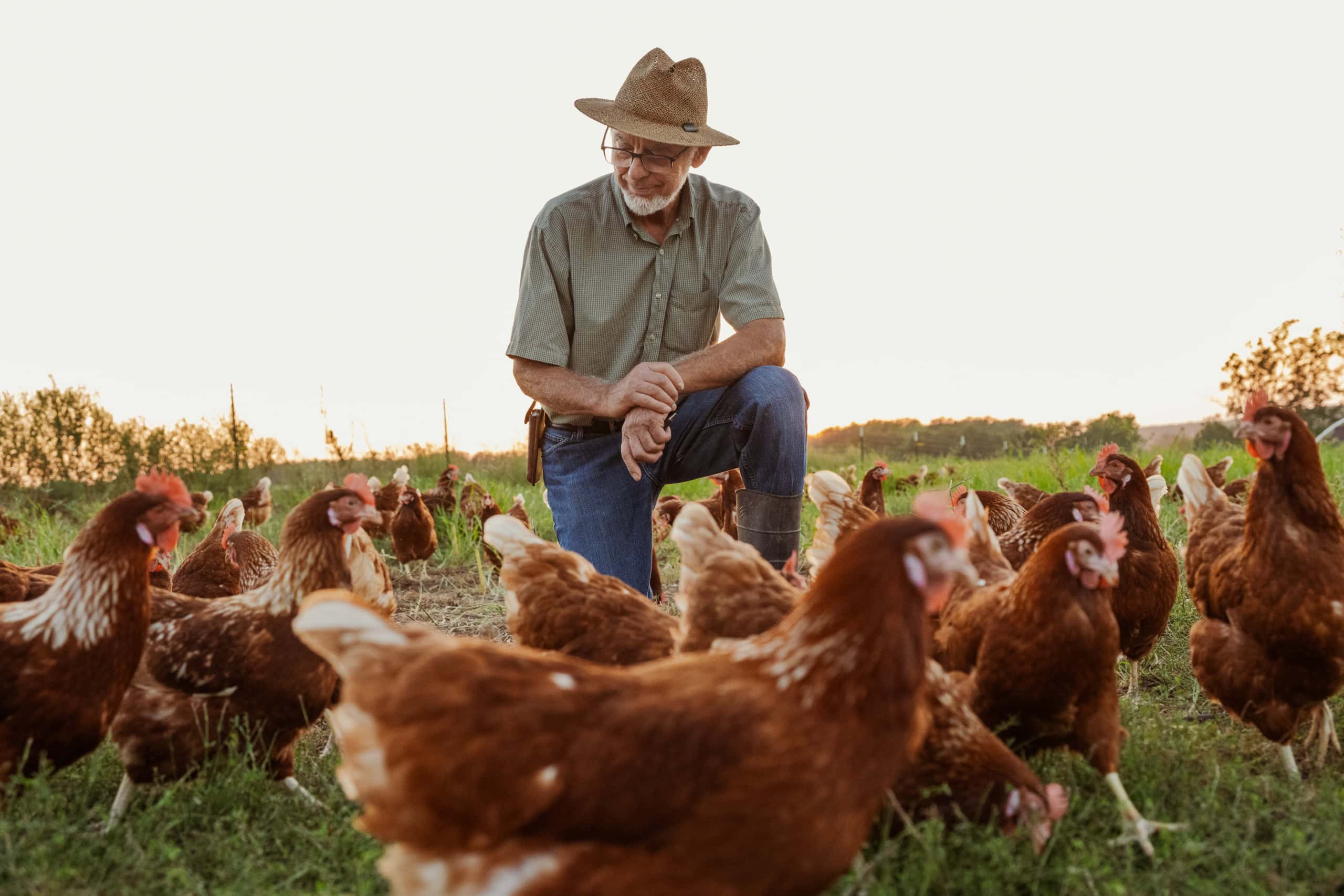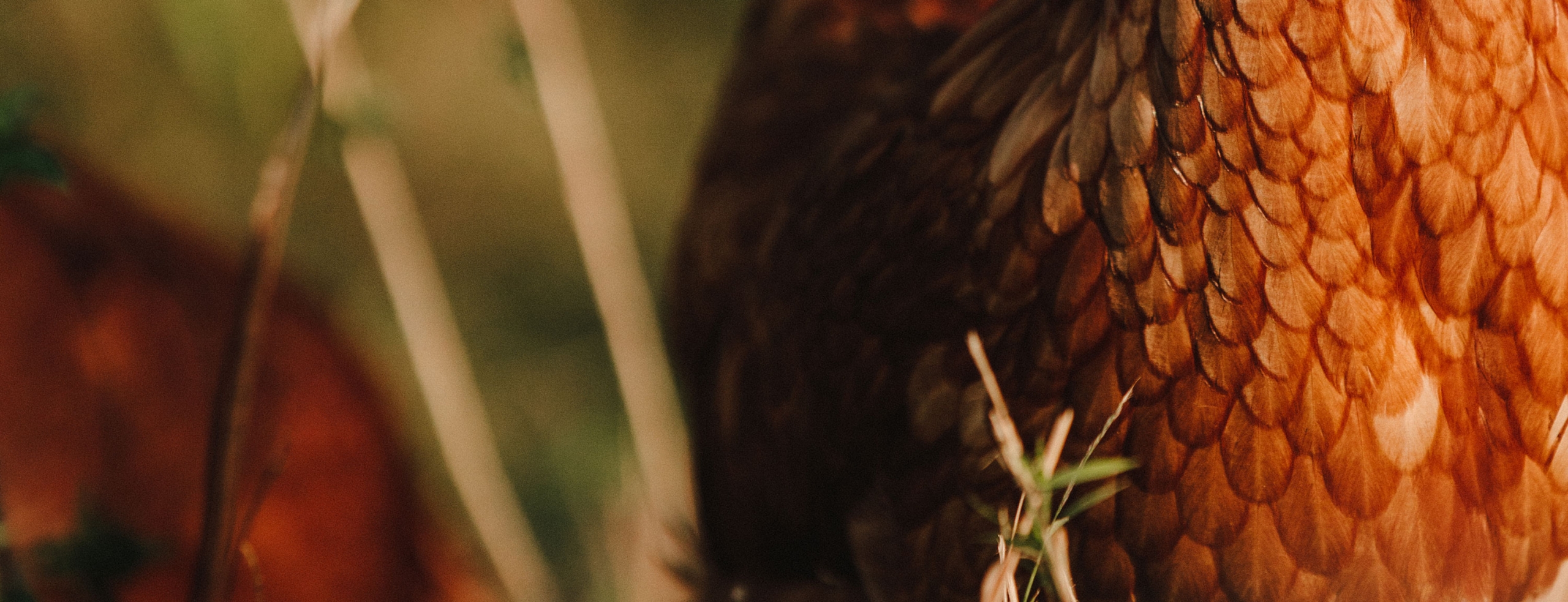
Allen at Sunny Side Up Farm
Our farmer, Allen, is known for his warm smile, charming personality, and distinct woven hats. His farm, Sunny Side Up, resides in the peaceful countryside of Missouri — a farmer’s paradise and the perfect grassy plot to care for his girls.
To be a regenerative farmer requires patience. It’s taking time to seed the land to improve its resiliency, advance biodiversity, and leave the earth better than they found it.
Allen’s intentional farming practices do just that. Since acquiring his farm in 2015, he’s dedicated nearly 10 years to seeding cover crops, planting trees, and rotating pastures to encourage an ecosystem that works harmoniously with nature.
As a young boy, Allen moved across country and state lines among beautiful landscapes of places like British Columbia and Montana. His surroundings, along with his father’s influence, taught him to respect and nurture the soil because, after all, it’s what keeps us alive.
“My dad never liked to put chemicals on his farm. I grew up learning that we humans survive off the soil. Think about your food. Where does it come from? Animals, especially, eat right from the ground. That’s why caring for the soil is important.”
Allen spent two days at a regenerative workshop, deepening his knowledge of soil health.
“They did a demonstration on healthy vs. unhealthy soil. When you pour water on healthy soil, it soaks it up like a sponge. When you do the same with dry, fertilizer and chemical-rich soil, it sits on the top and doesn’t want to penetrate.”
Healthy soil starts with strong roots. Allen covers his land with a sea of cover crops, resulting in waves of green, red, and orange-tinted seasonal grasses throughout his pasture.

As for his girls, they function as walking composters, dispersing seeds and suppressing pests — content as they weave through the lively green millet, necks arched up to reach its bushy seeds for a tasty afternoon snack. Allen gives them plenty of space to forage his crops, and in return, they provide food and good company.
“I’ve had hens since I was this big,” Allen flattened his palm and lowered it against his knee. “Mom and Dad got me a few hens, and I remember building my first chicken house. I made A-frames, put plywood on the sides, and gave it a little door. I built a board across the ‘A’ so they could roost inside. I’d come home from school and sit in the little door — I could fit in there — to watch my chickens. Sure enough, when I got an egg, I’d run inside and say, ‘Mom! I got an egg!'”
Rubbing his chin, deep in thought, Allen recalled the tune he’d call out to his hens to get their attention, “chick…..chick…..chick….chick…chick…chick chick chick!” And they’d all come running.

At dusk, Allen’s pastures flickered with the sun’s final glow, and locusts began humming like the strings of a violin. The girls took to the barn in queue with their internal clocks, followed by Allen, repeating the nostalgic calls of his childhood, “Come on girls,” he called, “time for bed! Chick…..chick…..chick….chick…chick…chick chick chick….”




